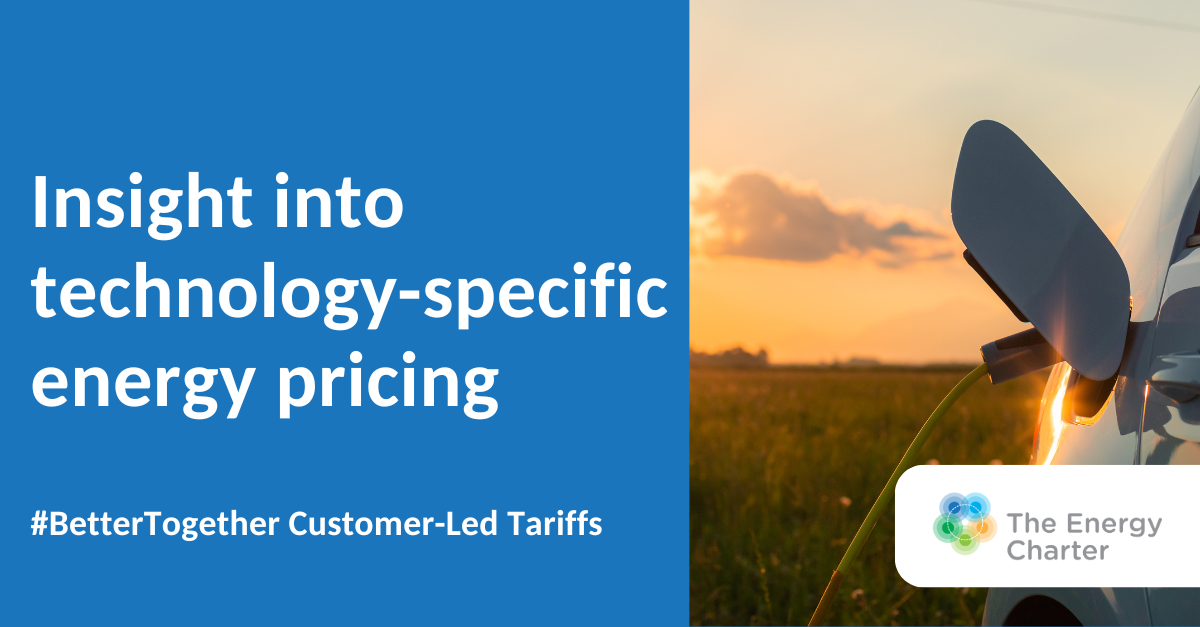
Recently US economist and energy pricing expert Ahmad Faruqui spoke to a forum hosted by The Energy Charter on customer-led tariffs. In this guest blog, he unpacks an innovative approach to technology-specific energy rates.
Electrification has emerged as a widely accepted option for lowering carbon emissions and mitigating climate change. Utilities offer rebates and governments offer tax credits to lower the capital cost of switching to electric vehicles (EVs), heat pumps and other electric devices but these incentives make a dent in their operating costs.
High operating costs pose a substantial barrier to electrification, especially in high-cost regions. Innovative rate designs, such as time-of-use rates, applied to the whole house, can lower operating costs but usually not enough to accelerate electrification. However, by changing the rate design paradigm, and offering technology-specific rates based on the marginal cost of electricity we can make electrification affordable, since it will substantially lower operating costs without raising rates for other customers.
Consider the case of California. The largest utility, Pacific Gas & Electric Company (PG&E), serves northern California, which is home to 14 million people. The average residential rate stood at 44.8 cents/kWh in January 2024. Using its E-1 tiered rate as a point of reference, the price of electricity has doubled over the past seven years, far exceeding the rate of inflation. In the seven years prior to 2017, it had grown by 23%. As a point of reference, in 2008 the average retail rate was 16.4 cents/kWh. The history of the average residential rate for PG&E is shown below.

One of the popular rates available to EV customers is EV2-A.
The rate features three pricing periods, and the prices per period during the summer months are shown below.

Most EV drivers charge their vehicles during the off-peak period when the rate is 32 cents/kWh. If EV load is priced at the marginal cost of electricity, the price may drop to 10 cents/kWh.
Under marginal cost pricing, a typical household whose EV load is 3,000 kWh a year would see their annual EV driving costs drop substantially, from $930 to $300. This would enhance the appeal of EVs to drivers who are in the market for a new car and should accelerate the EV adoption rate.
In the areas that lie east or south of San Francisco, or in the Central Valley, summers are hot, winters are cold. A heat pump for heating, ventilating and air conditioning (HVAC) may consume 3,500 kWh a year. In the summer, a heat pump in the cooling and ventilation mode is likely to run for several hours a day, spanning the off-peak, mid-peak and peak periods. It is likely to run most intensely in the late afternoon and early evening periods. In the winter, in the heating and ventilation mode, it is likely to run mostly in the mid-peak and off-peak periods.
If the year-round peak period price averages 55 cents/kWh, the mid-peak averages 49 cents/kWh and the off-peak price averages 31cents/kWh, then a weighted average price of 45 cents/kWh may be used to get a rough estimate of the annual operating cost of a heat pump.
With PG&E’s existing rate, that would amount to roughly $1,575. If, however, a marginal price of 15 cents/kWh is used, the cost would drop to $525, making heat pumps a substantially more attractive investment for customers, and probably accelerating their adoption rate. In both cases, operating costs fall by roughly 67%, as illustrated below.

It should be noted that operating costs with whole house TOU are likely to be 5-10% lower than with a flat rate, as compared to the 67% reduction that would accompany technology-specific marginal cost pricing.
Similar calculations can be performed for other electrification technologies, such as heat pump water heaters and induction stoves. In some areas, electrification might run into distribution capacity constraints, requiring network capacity expansion. In such cases, estimates of marginal capacity costs would be added to marginal energy costs. In addition, electrification-focused marginal cost pricing should feature time variation in energy rates to avoid creating new peaks and to facilitate load flexibility.
The technology-specific rate would consist of two parts. The first part would be a subscription plan based on existing rates and usage, which ensures that utilities will recover their revenue. The second part, based on marginal costs, would ensure that customers who electrify will see lower bills. Society will benefit through the lower carbon emissions that will accompany electrification. The world will be better off since climate change will be mitigated. There will be no losers, i.e., it will be a Pareto Optimal policy
Ahmad Faruqui is an economist who has worked on electricity pricing issues for 45 years on six continents.
To find out more about the work we’re doing on customer-led tariffs, alongside social justice organisations, community lived-experience panels and the Energy and Water Ombudsman, EnergyAustralia, Essential Energy and SA Power Networks, head to www.theenergycharter.com.au/customer-led-tariffs
